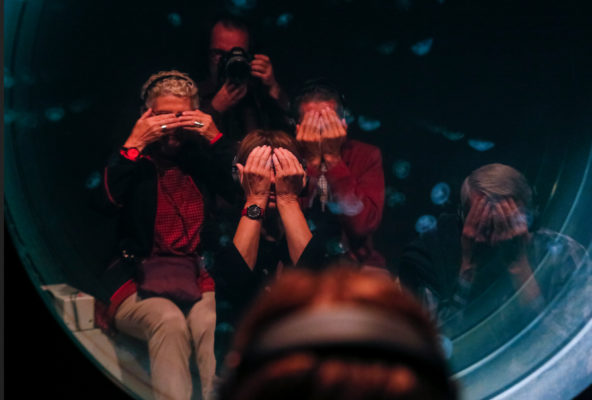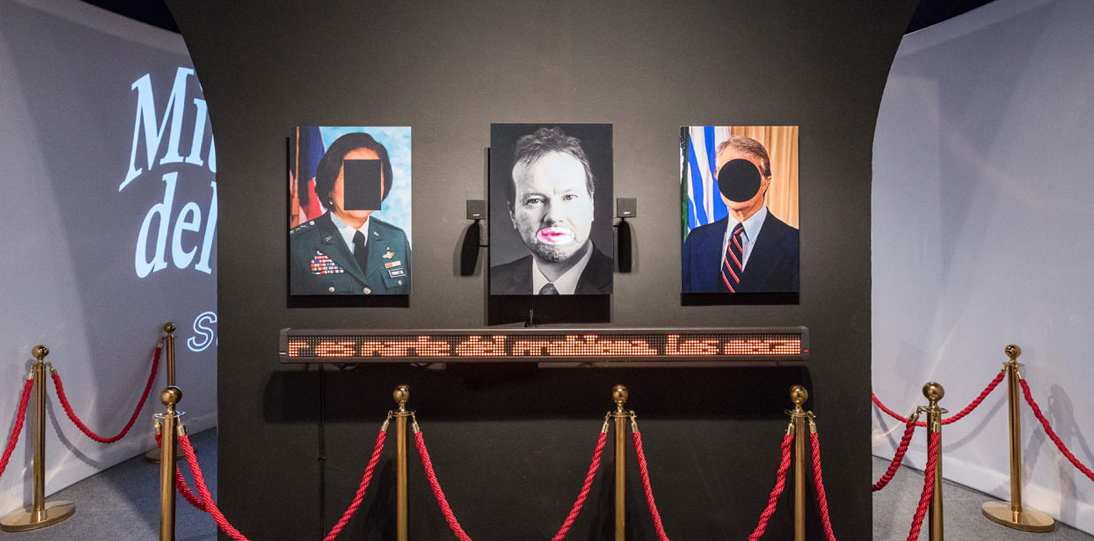Search
To search for an exact match, type the word or phrase you want in quotation marks.
A*DESK has been offering since 2002 contents about criticism and contemporary art. A*DESK has become consolidated thanks to all those who have believed in the project, all those who have followed us, debating, participating and collaborating. Many people have collaborated with A*DESK, and continue to do so. Their efforts, knowledge and belief in the project are what make it grow internationally. At A*DESK we have also generated work for over one hundred professionals in culture, from small collaborations with reviews and classes, to more prolonged and intense collaborations.
At A*DESK we believe in the need for free and universal access to culture and knowledge. We want to carry on being independent, remaining open to more ideas and opinions. If you believe in A*DESK, we need your backing to be able to continue. You can now participate in the project by supporting it. You can choose how much you want to contribute to the project.
You can decide how much you want to bring to the project.

Opening with a dramatic prologue by the great exponent of climate fiction, Kim Stanley Robinson, and an installation-essay in five episodes by philosopher Timothy Morton, founder of Dark Ecology and one of the most relevant theoreticians to have tackled today’s environmental crisis, After the End of the World is made up of eight immersive gallery installations that encourage intervention in areas such as environmental health, production and consumption, the transformation of terrestrial and maritime surfaces, food, speculative design and biodiversity.

Now that our geological age has been given the name Anthropocene and that the human species has left its irreversible trace on the earth’s ecosystems, assuming that this also implies the hegemonic belief in the inevitability of capitalism as a form of historical progress and biological and cultural essentialism, the installations in this exhibition act as ‘interventions’ in the sense assigned to the concept by philosopher Isabelle Stengers. In her essay In Catastrophic Times: Resisting the Coming Barbarism (2015) Stengers presents her view of the relationship between capitalism and nature as ‘interventions’: a way of taking part in an affair without trying to convince but to provoke a brief moment of pause, of arrest, thereby inaugurating a new space from which to subsequently change how the whole question is posed. Thus, most of the installations in the exhibition oscillate between the diagnosis of the present (the alarming desertification of the earth’s surface in Overview by Benjamin Grant, or the magnetic journey to the invisible infrastructure of production and consumption by the Unknown Fields Division collective) and utopian desire (the design fiction by Superflux, the Aeroceno project by Tomás Saraceno or the environmental health clinic la by Natalie Jemijenko), predicting new forms of sustainably recomposing the community.
The dialectical tension with non-human species that underlies the premises of Dark Ecology’s conception of an ecology without nature appears in the Win-Win installation by the German company Rimini Protokoll, an experience in interactive drama that speculates – both in the sense of reflecting and of surmising – on the species that ‘win’ or ‘lose’ in the ‘battle for life’, extrapolating the possibilities of survival of the human species from the ironical angle of Darwinist natural history. A post-humanist mise en abyme that helps minimise the ‘human’ scale of today’s environmental crisis. An experience in which the Anthropocene becomes a border, a liminal zone where, as advised by Donna Haraway in Staying with the Trouble: Making Kin in the Chthulucene (2016), we must learn ‘to live with the problem’ — today’s catastrophe as an irreversible condition, where the human and the non-human are inextricably involved, predicting other forms of what we call ‘life’.

Ana is fascinated to dive into books and movies, to approach with caution those tentacles that lie in the depths and to return to count what she has seen. She has published “Este es el momento exacto en que el tiempo empieza a correr” (Premio Antonio Colinas de Poesía Joven), the novels “La puerta del cielo” and “Hemoderivadas”, “Constelaciones familiares” (short stories, Premio Celsius Semana Negra de Gijón) and “Érase otra vez. Contemporary fairy tales” (essays). She currently lives and works between Berlin and El Paso, Texas, where she is a Bilingual MFA Fellow in Creative Writing at UTEP. Some of her texts have been translated into Portuguese, Italian, Polish, Lithuanian, German and English.
"A desk is a dangerous place from which to watch the world" (John Le Carré)